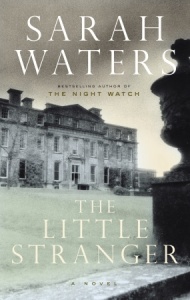 Stephen King said in Danse Macabre, his 1981 survey of horror fiction, that The Turn of the Screw (Henry James; 1898) and The Haunting of Hill House (Shirley Jackson; 1959) were the only two “great novels of the supernatural in the last hundred years.” If you have already read those two books, though, and noted how the second is a direct descendant of the first, where should you venture next in the haunted house genre?
Stephen King said in Danse Macabre, his 1981 survey of horror fiction, that The Turn of the Screw (Henry James; 1898) and The Haunting of Hill House (Shirley Jackson; 1959) were the only two “great novels of the supernatural in the last hundred years.” If you have already read those two books, though, and noted how the second is a direct descendant of the first, where should you venture next in the haunted house genre?
You could turn to the descendants of Hill House. The similarity of the title of Richard Matheson’s Hell House (1971) is no coincidence. The general plot–four psychic researchers investigate a haunted house–is essentially the same. The ambiguity of Jackson’s novel dissatisfied Matheson, and Hell House is his response. Stephen King’s own Carrie White (Carrie; 1974) is another descendant. Carrie’s childhood, like Eleanor’s, featured an unexplained shower of stones, and she also had a troubled relationship with her mother (to say the least). While there is no haunted house in that story, Carrie’s home is creepy enough to satisfy on that score. It’s no surprise that Hill House’s influence on King was strong, considering his high esteem of the novel. It’s not a stretch to claim that Hill House laid the foundations for both of the terrifying buildings in Carrie’s follow-ups: the Marsten House in ‘Salem’s Lot (1975) and the infamous Overlook Hotel in The Shining (1977). The Shining, for my money, wins the “what’s the scariest book ever written” parlor game, but Hill House follows at a close second.
 Moving a little later in time, we have plenty of haunted houses to choose from, all owing something to Jackson, certainly, but still offering a unique perspective to the genre. The House Next Door (Anne Rivers Siddons; 1978) features a modern, newly built haunted house with an equally ambiguous source of the haunting. The Woman in Black (Susan Hill; 1983) is a short novel as imprecisely placed in time as Hill House is in location. It introduces Eel Marsh House, a brooding gothic mansion on the edge of a treacherous moor. The house in The Little Stranger (Sarah Waters; 2009) is a dilapidated mansion that represents the decline of the British upper class after World War II, with yet another ambiguous haunting placing it squarely in line with its precedents.
Moving a little later in time, we have plenty of haunted houses to choose from, all owing something to Jackson, certainly, but still offering a unique perspective to the genre. The House Next Door (Anne Rivers Siddons; 1978) features a modern, newly built haunted house with an equally ambiguous source of the haunting. The Woman in Black (Susan Hill; 1983) is a short novel as imprecisely placed in time as Hill House is in location. It introduces Eel Marsh House, a brooding gothic mansion on the edge of a treacherous moor. The house in The Little Stranger (Sarah Waters; 2009) is a dilapidated mansion that represents the decline of the British upper class after World War II, with yet another ambiguous haunting placing it squarely in line with its precedents.
 Leading us to others, as yet unread: The Red Tree (Caitlin R. Kiernan; 2009); The Unseen (Alexandra Sokoloff; 2009); White Is for Witching (Helen Oyeyemi; 2009)–2009 was a very good year for haunted houses, it seems. We might expect to become bored with the premise after all this, but betrayal by the structures we have built to shelter and protect us continues to fascinate and terrify us. Rooms (Lauren Oliver; 2014) is a recent haunted house read, which delves into the minds of the ghosts who have merged with the rundown old house they inhabit. The gloomy, gothic haunted house might be an old chestnut, but it keeps on exciting our imaginations.
Leading us to others, as yet unread: The Red Tree (Caitlin R. Kiernan; 2009); The Unseen (Alexandra Sokoloff; 2009); White Is for Witching (Helen Oyeyemi; 2009)–2009 was a very good year for haunted houses, it seems. We might expect to become bored with the premise after all this, but betrayal by the structures we have built to shelter and protect us continues to fascinate and terrify us. Rooms (Lauren Oliver; 2014) is a recent haunted house read, which delves into the minds of the ghosts who have merged with the rundown old house they inhabit. The gloomy, gothic haunted house might be an old chestnut, but it keeps on exciting our imaginations.
Happy Halloween!